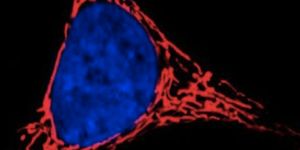If you drink from plastic water bottles, you're likely ingesting plastic
Roughly one million plastic water bottles are bought around the world every minute. That’s 20,000 per second. Less than half of those are collected for recycling, and only 7% are made into new plastic water bottles. But these macro-plastics aren’t the only issue we’re facing. Microplastics, defined as being less than five millimeters in length, are perhaps an even bigger dilemma. And new research suggests that nearly all one-time-use plastic water bottles contain microplastics in the water itself. So, what does that mean for human health?
The investigation comes from Orb Media, a journalism organization that tested 250 plastic water bottles from different brands around the world. The brands included Aquafina, Dasani, Evian, Nestle Pure Life, San Pellegrino, Aqua (Indonesia), Bisleri (India), Epura (Mexico), Gerolsteiner (Germany), Minalba (Brazil), and Wahaha (China), and the tests were conducted at the State University of New York in Fredonia.
Professor Sherri Mason, who ran the tests on the plastic water bottles and has done similar tests for tap water, used a technique called Red Nile dye, which is capable of rapidly detecting plastics in seawater. The dye attaches to microplastics which can then be more easily seen and counted. "We found [plastic] in bottle after bottle and brand after brand,” Mason stated.
The team found that 93% of the bottled water tested had contamination from microplastics. On average per liter, there were 10.4 particles that measured bigger than 100 microns – or about the width of a human hair. There was an average of 314 particles smaller than that per liter, which Mason says were most likely plastics as well.
Most of the brands whose water bottles were included in the tests commented that their products follow the “highest standards for safety and quality.” However, many companies also quickly pointed out that there are few regulations on microplastics and there currently does not exists a standardized global method for testing for microplastics in water.
Nevertheless, Mason’s intention was not to throw any one company under the bus, exactly. "It's not about pointing fingers at particular brands; it's really showing that this is everywhere, that plastic has become such a pervasive material in our society, and it’s pervading water - all of these products that we consume at a very basic level."
Although the science world has yet to fully understand the impacts that ingesting microplastics can have on humans and there is currently no evidence that consuming microplastics can result in negative health conditions, studies of marine animals have shown quite the contrary. Toxins from microplastics have been shown to harm sea-life and the actual act of ingesting microplastics often make animals bloated and eventually starve them because they do not consume enough real nutrients. Watch the video below to learn more.
Sources: BBC News (1) (2), Orb Media, National Geographic









